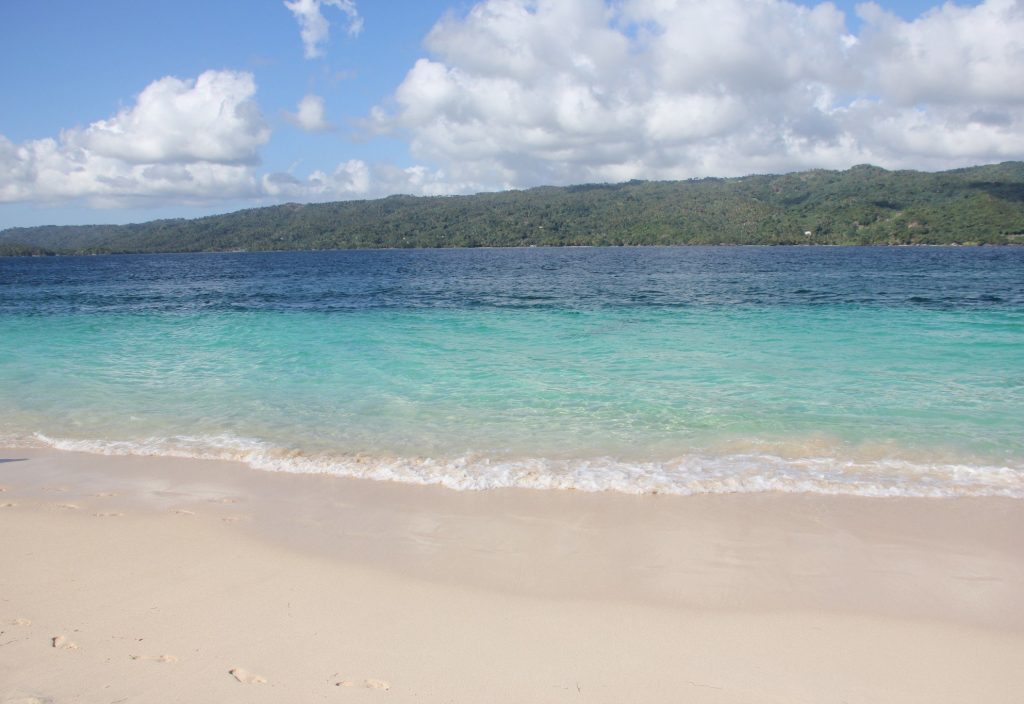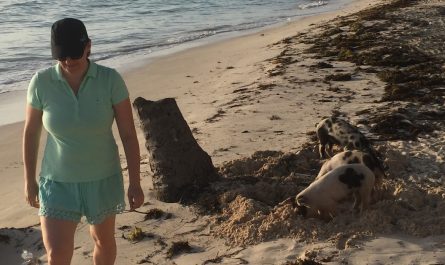
Take a look at the image above…
Consider how waves hit the shore gently at first, then abruptly. Where would you put a beach bed if someone gave you one to rest on after sunset?
If you were in your 20s, 30s, or even 40s, you’d probably feel safer putting the bed as close to the water as possible. If you see the tide rising, you probably won’t be too concerned because you’re strong and can quickly move the bed away from the water.
Despite the danger, you enjoy the action, so why not get closer to the water? You are willing to take the risk.
Let’s pretend you’re over the age of 65.
What would you do with that bed? Would you want to take the same risks as your 30-year-old self, knowing you don’t have the strength or agility to move as quickly?
Most likely not.
You’d want to place the bed far enough away from the water so that you don’t get a rude awakening from a wave in your face, potentially drenching you. (No offense to anyone over the age of 65.) My father is 77 years old and can move a mountain faster than a 30-year-old can upload a selfie to a social media channel.)

Risk tolerance
Our risk tolerance decreases as we get older. The same is true for our investment risk tolerance. We take more risks in entrepreneurial activities or other investments when we are young because time is on our side. If we fail, we can get back up and still make a fortune.
However, as we age, our financial mistakes can cost us dearly because we may not have a long time horizon to make amends.
We are paying close attention to risk in our asset portfolio today because we will be retiring in a few years. The main difference is that, even though we’ll be in our early 30s/40s, our risk tolerance will be similar to that of a typical couple at the traditional retirement age of around 65.
But here’s the catch: we need to live mostly on dividends and capital gains, not principal, and make our assets last for at least five decades.
Approaching the finish line
We’re only a few years away from financial independence. We’ll be busy over the next few years (when aren’t we?) transitioning to the fun lifestyles of early retirees and working on portfolio stability.
And what is the single most important FI-related question that we are currently working on to help us get there?
The question we’re working on is what our asset allocation should look like in retirement to ensure that we have a strong solid bed to rest on at that beautiful beach.
Amount needed to retire early
To be able to retire early, we must have a certain amount invested in income-producing assets, and we must be able to withdraw around 3-4 percent of our portfolio to cover our annual expenses without depleting the principal too quickly.
How did we figure out how much we needed in assets to be considered financially independent and able to retire early?
When we reach financial independence, we have “25x our annual spending” in income-producing assets. As a guideline, we’re using the safe withdrawal rate. This question was answered in greater detail in this post: The FI Million Dollar Question: How Much Would I Need to Fund my Lifestyle Forever?
Asset allocation mix
Bonds, stocks, real estate, and short-term reserves are currently among our income-producing assets.
An asset allocation chart is one of the most impactful visuals I enjoy looking at, second only to net worth charts, because it shows us how our entire portfolio is invested. It’s a snapshot of how our resources are distributed.
Risk tolerance extremes
Some investments are riskier than others, and the higher the potential reward, the higher the risk.
There is no risk if you put your money in an FDIC-insured savings account that pays less than 3% interest per year, but your money will not keep up with inflation. This is a safe place to keep your money for an emergency fund or for short-term goals.
If you put all of your money into stocks, you may wake up one morning to discover that you have lost a significant portion of your investment. To be 100% invested in stocks, you must be able to withstand a 50% drop in your portfolio.
In that case, you may feel as if you’re drowning, but if you do nothing, essentially don’t sell while the market is low, the wave will recede and you will feel safe again at some point.
In this case, the loss is unrealized, which means that unless you sell your stocks, you still own the same number of stocks and have a chance to recoup your losses when share prices rise again.
You can mitigate the risk by implementing a sound investment strategy. You must also consider your investment objectives and time frame.
For example, we don’t invest any money that we might need in the next five years in stocks because there’s a good chance the investments will lose value by the time we need them. We do not want to be forced to sell our shares if their value falls.
The growth-oriented investor
If we worked the traditional path to retirement until we were 65 and didn’t have any real estate investments, our portfolio would be mostly geared toward growth right now. We’d have a long investment time horizon, so market ups and downs wouldn’t matter.
Our investment would be heavily weighted towards stocks, with an asset allocation of 80-100 percent stocks and 20-0% percent bonds.
The income-oriented investor
If we were a couple in our 60s, close to traditional retirement age, and had no real estate investments, we would be concerned about market performance and taking on too much risk. We’d want to protect the money we’ve saved while also generating income from our portfolio to cover our expenses.
Our investment strategy would be heavily weighted toward bonds, with an asset allocation of 20-60% stocks and 80-40% bonds.
A traditional retiree’s asset allocation would most likely be income-oriented.
The hybrid (growth and income) investor—this could be us!
With our separate 401(k)s and other accounts after we married, it was difficult to see the big picture. We use Personal Capital to help us see everything at a glance.
Personal Capital does an excellent job of displaying your total asset allocation, but we prefer to use our own spreadsheet for the time being (see sample below with made-up numbers). It’s simple to maintain and provides us with a comprehensive picture of our asset allocation.
What distinguishes our asset allocation from that of a typical retiree?
- We want a large portion of our portfolio to grow while we are young, and we intend to withdraw the smallest amount possible each year.
- We’ll need to keep some of our investments in our brokerage account for the first five years because we won’t be able to withdraw from our retirement accounts during that time. We’ll be able to withdraw after five years by using an IRA/Roth conversion ladder. This allows us to withdraw 401(k) funds before reaching the age of 59 and 1/2.
- We expect our real estate investments to generate income, so we won’t need to dip as deeply into our savings. However, in the future, we intend to focus on real estate rental investments that will provide pleasant experiences for our guests, such as vacation rentals, rather than the traditional housing rental investments we currently have with permanent tenants.
- We have a good chance of increasing our assets after early retirement because we intend to stay active by doing enjoyable activities, and some of our hobbies, such as consulting, blogging, and so on, may even generate income.
- We’re not counting on social security income, but if it’s still available by the time we reach traditional retirement age, it’ll be a huge help.
Where our asset allocation stands today
(Note: We used a WordPress plugin to display our allocation at the time, and the data was lost during the transfer from Enchumbao to Crucial Wealth. We regret that we are unable to reproduce it.)
We can determine where we need to rebalance our asset allocation by seeing our entire asset allocation at a glance. Our 401(k)s may show that we are heavily invested in one asset class, but our overall asset allocation tells a different story.
For example, our rental property earns an average annual return of 10% after expenses. We expect that trend to continue, as we will not invest in real estate that does not have the potential to generate at least that much return.
More fun work ahead
Financially, we’ve been analyzing where we should be in 2-3 years and making adjustments to shift our assets accordingly.
We’re looking at different asset allocation models for stocks, bonds, and short-term reserves to see how much we should put into each.
Our real estate assets will also change as we prepare to sell our property over the next two years and explore some new exciting real estate opportunities abroad. The pieces are gradually falling into place. We’ll keep you updated on our progress.
It’s amazing what you can achieve when you have a vision and stay focused. Anyone can take the time to quickly create a net worth sheet. We hope you’ll join us on the FI journey so that we can create an amazing community of early retirees!
What financial objectives do you have in mind?
Risk disclosure: All investments involve some level of risk, including the possibility of losing principal. The information on this website is provided for discussion purposes only and should not be construed as financial advice.






Nice explanation of how you go about your asset allocation. I’m much farther out from FI than you are so I’m sticking with a 100% stock allocation. In a future post, I’d like to hear which investments you use for stocks and bonds. I think it might be helpful to compare notes 🙂
Thanks. Sticking with a 100% stock allocation makes perfect sense if your early retirement date is far out. We realized that we don’t want to spend the time searching and reviewing individual stocks so we invest mostly in index funds. We hold Vanguard funds. As of now, in our 401(k)s we own: VITPX (Total Stock), VPMAX (PRIMECAP), VSCIX (Small Cap), VTPSX (Total International) and VBMPX (Total bond). I’m looking to add VTIFX (Total International Bond) into the mix, to be discussed with Tanya. 🙂 We have more or less the same funds in our brokerage account. We like to keep it to no more than 5-6 funds, that way is easily manageable and we have more options for rebalancing and can take advantage of opportunities.